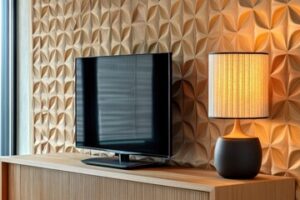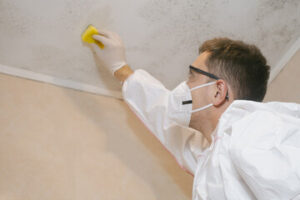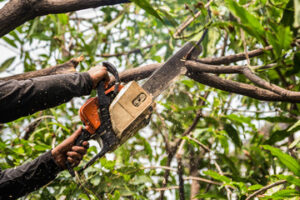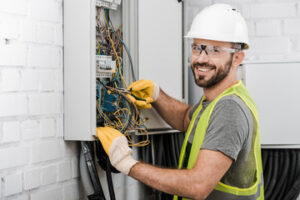Nashville TV Mounting allows you to keep it secure and free from accidental knocks. It also eliminates the need for a TV stand, making your space more streamlined.

First, lay the TV down on a flat surface that is covered with a soft blanket or carpet (to prevent damage). Using a stud finder, locate and mark a span of two studs.
TV mounting is a great way to optimize your viewing experience and free up space on your entertainment center. However, it’s important to take time to choose the right mount for your home and consider all the steps involved in the installation process. This includes locating wall studs, properly installing the mount, and ensuring that all locking mechanisms are securely fastened. By taking the necessary precautions, you can avoid common mistakes that may lead to an unattractive or unsafe television mount.
The first step in choosing the right mount is determining the best location to install your television. Consider the ideal viewing distance, glare from windows and lights, and cable access points. Evaluate the room layout, considering things like furniture placement and how the TV will integrate with your home decor. Additionally, be sure to take into account the potential for additional features such as a surround sound system or Roku TV.
Once you’ve determined the optimal location, locate the position of the studs with a stud finder or other device. Using a stud finder helps to ensure that the mounting hardware will be placed in a drywall stud rather than a hollow wall. Incorrectly identifying the location of a wall stud can result in unevenness, instability, or even damage to your TV.
Once the stud locations are known, choose a mount that’s compatible with your TV’s VESA pattern specifications. The VESA pattern is the set of standards for the location and distance between mounting holes on the back of your TV. The VESA pattern on your TV should match the VESA pattern on the mount in order to ensure proper alignment and support.
Some TV wall mounts also include additional features, such as tilting and swiveling. Determine if these additional features are important for your viewing experience and make a note of the specific mounting capabilities for each model.
Once you’ve chosen a mount, it’s time to prepare the wall for mounting. Depending on the type of mount you’ve selected, this may involve marking a drill template or drilling into the wall with a lag bolt. If your mount is designed for a wooden stud installation, make sure that you’re using lag bolts appropriate for the material of the wall. For example, if you’re using metal lag bolts on a concrete wall, they’ll need to be secured with masonry anchors.
Preparing the Wall
If you’re moving into a new house or have an extra wall in your living room, mounting a TV can be a great way to make the space more comfortable and efficient. It will eliminate the need for a large cabinet or stand taking up floor space in your living area, and it will also make it easier to clean and dust. However, before you start drilling into your walls, it’s important to choose the right location and prepare the area. First, decide where you want to hang your TV and measure the height from the ground to the top of the screen. Ideally, the TV should be centered at eye level when you’re sitting down and can easily be reached from the couch or sofa.
Next, you’ll need to determine the type of wall you have in your home. Most modern homes are built with drywall, but older homes may have brick or cinder block walls. If you have brick or cinder block walls, you’ll need to use special anchor bolts to mount the TV.
If your home is built with drywall, you’ll need to locate the studs in the wall using an electronic stud finder or another tool. Most studs are spaced 16” apart, and you’ll want to be sure that the mounting plate for your TV will span two studs.
Once you’ve determined the stud locations, mark them on the wall with a pencil. Then, take the wall bracket and place it over the marks to ensure that it will be able to support your TV. Most wall brackets have screws that will be used to attach it to the wall. Make sure that the holes in the bracket line up with the holes in the studs so that the mount is secure and will not move or shift on the wall.
Using a drill, screw the wall bracket to the studs in the marked spots. You should feel some resistance when you’re screwing into a stud, but if you don’t, it could mean that you missed a stud and will need to adjust your wall mounting position.
Hanging the TV
Once you’ve determined the best location for your TV, figured out how you’ll manage its A/V and power cables, and purchased the necessary mounts, it’s time to actually hang the thing. This is an easy enough process, but doing it right can make all the difference in a clean-looking installation that won’t wobble or damage your TV.
First, carefully lift the TV to its desired height (or slightly higher). This is important because you’ll be able to see the mount plate better at this point, and you’ll want to ensure that the mounting screws aren’t too tight, which can damage the chassis or strip the screw heads. Next, mark the location of the plate on the wall with a pencil or painter’s tape. Then use a cordless drill to create pilot holes in the locations marked with a pencil. Make sure the holes span two or more studs.
At this point, it’s helpful to have another person help you if you can — especially since some mounts require the TV be secured to the frame with heavy-duty wire ties. You should also be cautious when lifting the TV, holding it by its outer bezels instead of its screen. The screen is extremely fragile, and touching it can easily damage it.
Depending on your wall type, you may need to install masonry anchors or screws rated for your TV’s weight. For example, brick and concrete walls typically require more substantial hardware than drywall. Follow the manufacturer’s instructions for marking and installing the anchors or screws.
If you’re mounting your TV over a fireplace, be sure to purchase a special fireplace bracket. This will allow you to lower the TV down when you’re not watching, and then raise it back up to a comfortable viewing height. You can even use it to hide any cables you need to run behind the fireplace.
Adjusting the Angle
A TV mounted too high up on the wall can cause neck strain and headaches. You can avoid this by determining the right angle before you install the mount. The ideal height for a TV depends on your personal comfort level, sofa height, distance from the screen, and whether you tend to slouch when you watch TV or recline. To figure this out, measure your approximate seated eye height from the floor and use that to calculate where the center of the TV should be on the wall.
Once you have determined where to mount the TV, it’s a good idea to try out different angles to see what works best for you. This is especially important if you will be watching TV in a room with several people. It’s easy enough to ask a few friends or family members to help you out by holding the TV up in each potential mounting position while you sit on the couch to find what’s comfortable.
You can adjust the tilt of your TV mount by loosening the adjustment knobs or screws with a screwdriver or wrench. Then, gently move the TV to your desired angle and tighten the knobs or screws back up. Be sure to tighten them enough to keep the TV secure, but not so tight that they are difficult or impossible to move.
Some people also choose to tilt their TVs down a little in order to reduce glare or reflections on the screen. This can be particularly helpful if you’re watching TV in a room with windows or lights that create distracting glare on the screen.
While the optimal viewing angle will vary from one person to the next, most experts agree that the bottom of the TV should be at least 1/3 to 1/2 of the way up from the floor. This is a general rule that will work well for most rooms, but you may need to make adjustments based on your personal comfort level and the layout of your space. For example, if you have stadium seating in your living room, the center of the TV should be at about seat height, while a bedroom TV may need to be higher up on the wall since you will be watching it while lying down.


